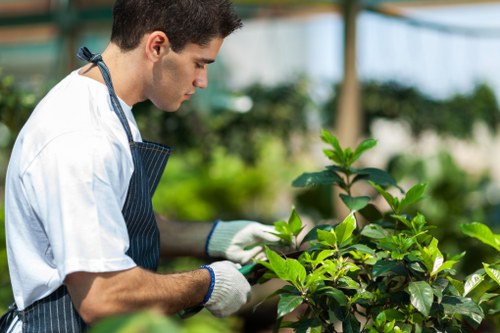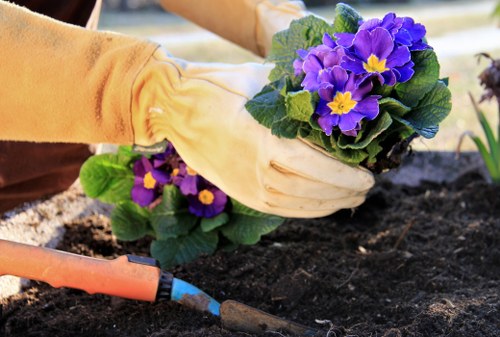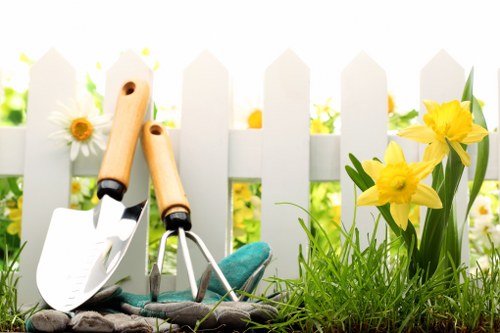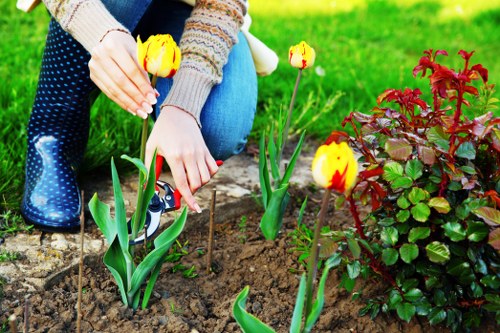Mastering Hedge Trimming in Poplar: Techniques and Tips
Introduction to Poplar Hedge Trimming

Poplar trees are a popular choice for hedges due to their rapid growth and dense foliage. Proper hedge trimming in poplar not only enhances the aesthetic appeal of your garden but also promotes the health and longevity of the trees.
Regular maintenance is essential to prevent overgrowth and ensure that the hedges retain their desired shape. This article provides a comprehensive guide on effective hedge trimming techniques tailored specifically for poplar trees.
Understanding the unique characteristics of poplar trees is crucial for successful hedge trimming. Their fast growth rate requires more frequent maintenance compared to other hedge species.
Why Trim Poplar Hedges?

Trimming your poplar hedges offers numerous benefits. It helps in maintaining a neat appearance, controlling the size of the hedge, and promoting healthy growth.
Moreover, regular trimming can prevent pests and diseases by allowing better air circulation and sunlight penetration. This is particularly important for poplar trees, which are susceptible to certain fungal infections if left untrimmed.
In addition to health benefits, well-maintained hedges can significantly enhance the privacy and noise reduction qualities of your garden, making it a more enjoyable space.
When to Trim Poplar Hedges

Optimal Trimming Seasons
The best time to trim poplar hedges is during late winter or early spring, just before the new growth begins. This timing allows the trees to recover quickly and ensures a vigorous growth cycle.
Another suitable period is after the initial flush of growth in early summer. This can help in shaping the hedge and maintaining its structure throughout the growing season.
It's important to avoid trimming during extreme weather conditions, such as late autumn or mid-summer heatwaves, as this can stress the trees and impede their growth.
Essential Tools for Hedge Trimming

Basic Tools Needed
- Pruning shears: For precise cutting of smaller branches.
- Loppers: Ideal for thicker branches that pruning shears can't handle.
- Hedge trimmers: Useful for trimming large sections of the hedge efficiently.
- Protective gear: Gloves, goggles, and protective clothing to ensure safety during trimming.
Advanced Tools for Precision
For more intricate trimming, consider using electric or battery-powered hedge trimmers. They offer greater control and reduce manual effort, allowing for a more uniform hedge.
Step-by-Step Guide to Trimming Poplar Hedges

Preparation
Before you begin, ensure that all your tools are clean and in good working condition. This prevents the spread of diseases and makes the trimming process smoother.
Assess the overall shape of the hedge and determine the areas that need the most attention. Planning ahead can help you achieve a more balanced and aesthetically pleasing result.
Clear the area around the hedge to provide ample space for maneuvering your tools.
Trimming Techniques
- Start from the bottom: Begin trimming from the base of the hedge, working your way upwards. This ensures that each subsequent level is supported effectively.
- Maintain even spacing: Keep the cuts uniform to promote a consistent shape and density.
- Don't over-trim: Removing too much foliage can stress the trees and hinder their growth.
Finishing Touches
After the main trimming, inspect the hedge for any uneven areas or stray branches. Make final adjustments to perfect the shape.
Clean up any clippings to prevent pests and diseases from taking hold in the debris.
Maintenance Tips for Healthy Poplar Hedges

Regular Inspections
Conduct routine checks to identify signs of disease or pest infestation early. Prompt action can save your hedge from severe damage.
Ensure that the hedge receives adequate water, especially during dry spells, to maintain its lush appearance.
Applying a balanced fertilizer in the growing season can promote stronger and healthier growth.
Pruning Best Practices
- Cut at the right angle: Make angled cuts to prevent water accumulation and reduce the risk of rot.
- Use sharp tools: Sharp blades ensure clean cuts, minimizing damage to the plant.
- Avoid heavy pruning: Limit the amount of foliage removed in a single session to avoid stressing the tree.
Professional Help
If you're unsure about trimming techniques or dealing with extensive hedges, consider hiring a professional arborist. Their expertise can ensure that your poplar hedge remains healthy and well-maintained.
Common Mistakes to Avoid

Over-Trimming
Removing too much of the hedge at once can lead to shock and inhibit healthy growth. Always trim responsibly, adhering to recommended guidelines.
Incorrect Timing
Trimming at the wrong time of year can expose the hedge to diseases and reduce its ability to recover. Stick to the optimal trimming seasons mentioned earlier.
Poor Tool Maintenance
Dull or dirty tools can cause ragged cuts, increasing the risk of disease. Regularly maintain and sterilize your tools to ensure clean trimming.
Enhancing Hedge Trimming Results

Shaping Techniques
Experiment with different shaping techniques to give your hedge a unique look. Whether you prefer a formal, geometric shape or a natural, flowing form, consistent trimming will help achieve your desired style.
Incorporating Lighting
Adding garden lighting can highlight your well-trimmed poplar hedge, creating an enchanting evening display.
Seasonal Decorations
Enhance the appearance of your hedge by incorporating seasonal decorations, such as wreaths or string lights, during festive periods.
Conclusion

Effective hedge trimming in poplar requires understanding the specific needs of these fast-growing trees. By following the outlined techniques and maintenance tips, you can ensure that your poplar hedges remain healthy, attractive, and a standout feature of your garden.
Remember, consistency is key. Regular trimming not only preserves the beauty of your hedges but also fosters robust growth, ensuring they thrive for years to come.
Contact us today to book your hedge trimming service and give your poplar hedges the care they deserve!